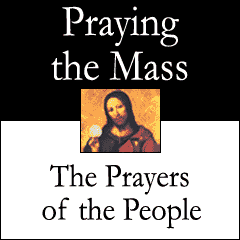Well, that isn’t quite the quote, I admit, but it could have been said. I am referring to an excellent article in Saturday’s edition of The Age called “Mad, bad or masterful?” by Ray Edgar on La Sagrada Familia, the Barcelonian Church and dream of Antonio Gaudi, nearing completion and to be consecrated by Pope Benedict XVI this coming Sunday. It is a very good article, which brings to light a Melbourne connection with the Church. Melbourne architect and professor at RMIT, Mark Burry, has been working on the Church as a consultant for thirty years, and the article focuses on his attitude toward La Sagrada Familia and its original architect.
The quotation is actually from Burry himself, who said “It’s not my building, it’s Gaudi’s”, but the whole article points to a controversy in the direction of the heading of this post. At the end of the article, Burry says, in answer to the question “But is it in service to God or Gaudi?”:
“It’s a church,” says Burry. “Its purpose is to afford the congregation of people from all walks of life with a place for one purpose. If they are thinking of architects, they will be thinking of Gaudi and an architect who died in 1926, who had the capacity to inspire people to make money sufficient to get the church started and built, and inspired people to continue that work 80 years after his death.”
And it is precisely this point – that La Sagrada Familia is a CHURCH – that gets up the nose of secularist opponents to this amazing and miraculous project. As Edgar summarises:
While zealots have, over the years, nominated Gaudi himself for sainthood, not everyone is rejoicing in the building’s completion. This landmark of the city, which attracts 2.6 million tourists a year, is also a symbol of the divisions within it. The issues involve heritage, the role of the church and state, and, indeed, the reputation of the architect himself – one whose architecture teacher described him to his students as “a genius and probably mad”. [my emphasis]
He goes on:
Indeed, the cultural tremors surrounding the Sagrada Familia date back decades… After the war, Europe’s cultural elite felt the same way about continuing construction on the site. Architectural luminaries such as Le Corbusier and Gropius signed local petitions against it. More recently, FAD, the key artistic and architectural union in Barcelona, produced the “Gaudi: Red Alert” manifesto signed by the Spanish intelligentsia, including the head of the Reina Sofia museum. Former FAD president Beth Gali herself appears in Robert Hughes’ 2003 Gaudi documentary offering facetious proposals for the new sections of the church – a Christo wrapping, a train station, which Hughes, another opponent, happily endorses. In his 1992 book on the city, Hughes laments, “Nothing can be done about the Sagrada Familia”.
“There’s lots of reasons to think of why you wouldn’t want to continue that building,” Mark Burry says. “That it’s better off as a ruin, testament to a tragic genius, or that it’s better to rethink religious observance for the 21st century in a different form. I asked them myself when I came here in 1979. Why didn’t they adapt it to a secular plan? It seemed like that would be a more ecumenical approach. I was told it’s not my building, it’s Gaudi’s building.”
……Barcelona-based architect David Mackay, a partner in the prestigious architectural firm MBM Architects, who signed the petition against the project along with Le Corbusier, says the church is the product of Gaudi’s deluded obsession, rather than the great man’s best work. Gaudi was in thrall to God and “his mind was stolen by fundamentalism”. What has been created in his wake is “Gaudi at his worst”, says Mackay. [my emphasis]
You get the drift. Gaudi’s creation is an afront to the intelligentsia of Spain because it is a religious testament, and that seems out of step with today’s modern Spanish ideals. As if to prove the point:
A high-speed train tunnel connecting Paris, Barcelona and Madrid passes within 0.4 metres of the World Heritage-listed building’s foundations. Despite the four-year campaign by the Sagrada Familia’s chief architect, Jordi Bonet, and pressure from UNESCO, Spain’s Socialist government commissioned tests and allowed the 12-metre-diameter drill to bore past. To not do so, advocates of the tunnel argued, would be to allow the church to “hold back the progress of Spain”.
Philistines.
As a side note, another thing mentioned in the article that strikes me is the “holism” of the vision for the Church:
“For me the fascination of Gaudi is his holism,” [Burry] says. “Whether it’s structure or construction or decoration or form or repertoire of materials or economics, he seems to be the master.” …The argument follows that like the cathedrals of old, one architect could not possibly finish it in their lifetime. “Gaudi knew this,” says Burry, “and used the models to explain it well enough for others to continue the job.”
The same holistic vision is what appeals to me about our own Cathedral of St Patrick in Melbourne. It is an entire whole, a complete vision inside and out of Wardell’s single architectural plan.
I thank God for La Sagrada Familia and the dedication of men like Mark Burry in seeing it to its completion. Edgar reports that “thanks to Gaudi, the Pope’s visit to Spain will probably receive more attention than his recent visit to London”. In a sense it will be a continuation of the Holy Father’s message in Britain. Gaudi’s Church is a statement that, even in our modern society, there can be no true human “progress” in a society that loses sight of God.










